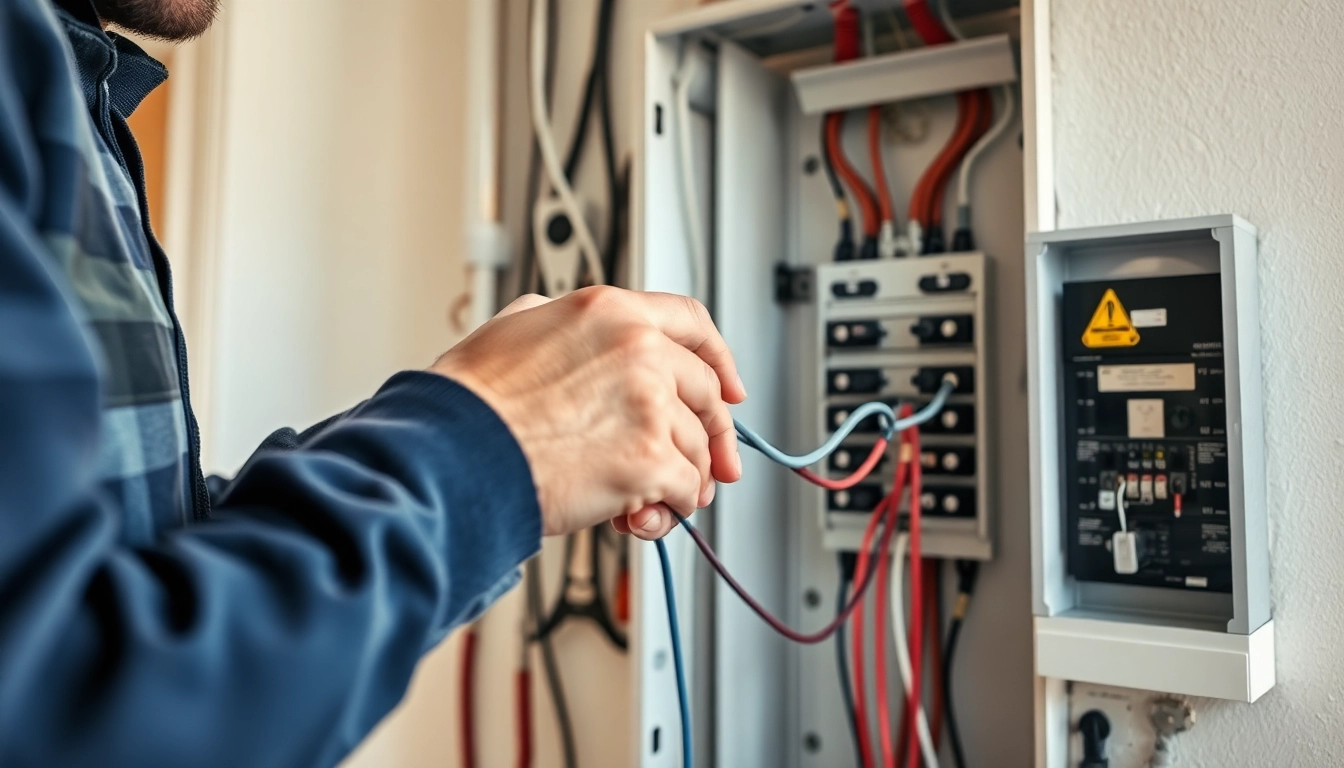What is an Electrical Panel Upgrade?
Definition and Importance
An Electrical Panel Upgrade refers to the process of replacing your existing electrical panel with a new one that offers increased capacity and improved safety features. The electrical panel, often referred to as the breaker box, plays a crucial role in managing the electrical supply throughout your home. It directs electrical flow from the utility company into different circuits, ensuring that each part of your residence receives the correct amount of power. Over time, as technology advances and the number of electrical devices within homes increases, many older panels may struggle to handle the load, leading to potential safety hazards and inefficiency.
Common Reasons for Upgrading
There are numerous reasons why homeowners opt for an electrical panel upgrade. These include:
- Increased Demand: With the rise of smart home technology and electric vehicles, households require more power than ever before.
- Older Panels: Many homes built decades ago still utilize outdated panels that may not comply with current safety standards.
- Tripped Breakers: Frequent tripping of circuit breakers can indicate that your panel cannot handle your current electrical load.
- Home Renovations: Adding new appliances or upgrading major systems often necessitates a thorough evaluation of electrical capacity.
Signs You Need an Upgrade
Recognizing the signs that you may need an upgrade can save you from potential electrical hazards and inefficient energy usage. Key indicators include:
- Fluctuating power to devices and lights dimming or flickering.
- Burning smells or scorch marks near outlets or the panel.
- Breakers that continuously trip or fuses that blow.
- Inadequate amperage for your household needs, particularly if you have a 100 amp service or lower.
Benefits of an Electrical Panel Upgrade
Increased Power Capacity
One of the primary benefits of an electrical panel upgrade is the significant increase in power capacity. Modern panels often come with a 200 amp service, which can accommodate multiple large appliances and devices without causing interruptions or overloads. This increased capacity not only supports current electrical needs but also allows for future expansions, such as adding an electric vehicle charger.
Improved Safety Features
Older electrical panels are often installed with outdated safety measures and may not comply with current building codes. New panels incorporate enhanced safety features, including:
- Surge protection: Safeguards against voltage spikes that can damage appliances.
- GFCI and AFCI breakers: Ground Fault Circuit Interrupter (GFCI) and Arc Fault Circuit Interrupter (AFCI) breakers help prevent electrical fires and reduce the risk of shock by detecting ground faults or arcing.
Enhanced Energy Efficiency
An upgrade can lead to improved energy efficiency throughout your home. Current panel technologies minimize energy loss, which can translate into lower energy bills. Additionally, efficient wiring and modern circuit designs reduce the likelihood of overheating and energy waste.
Cost Considerations for Electrical Panel Upgrade
Average Costs Involved
The cost of an electrical panel upgrade varies significantly based on various factors including location, type of panel, and complexity of installation. On average, homeowners can expect to spend anywhere from $800 to $4,000 on an upgrade. Smaller, straightforward jobs might cost around $800, while larger, more complex installations can approach $5,000 or more. Understanding these costs upfront helps homeowners budget appropriately.
Factors Influencing Pricing
Several factors influence the final price of your electrical panel upgrade, including:
- The amperage of the new panel: Panels with higher amperage will typically cost more.
- Permitting and inspection fees: Local regulations may require permits for electrical work. Any necessary inspections can also add to costs.
- Labor: The complexity of the installation job and the experience level of the electrician can impact labor costs.
Potential Financing Options
If the upfront costs are daunting, various financing options are available for homeowners. These options may include:
- Home improvement loans: Many financial institutions offer loans specifically for home upgrades.
- Credit lines: Using existing credit lines can ease the financial burden of immediate costs.
- State and federal rebates: Some regions offer rebates or tax credits for electrical upgrades, especially those that enhance energy efficiency.
The Electrical Panel Upgrade Process
Initial Inspection Phase
The upgrade process begins with a thorough inspection by a qualified electrician. During this phase, the electrician evaluates the current panel, wiring, and overall electrical system to determine the existing load and potential needs. This evaluation is crucial to ensuring that the new panel can accommodate the electrical requirements of the home safely and effectively.
Choosing the Right Panel
Once the inspection is complete, selecting the right panel is the next step. Homeowners should consider the following when choosing an upgrade:
- Amperage: Most homes today benefit from 200 amp panels, but some may require higher capacity depending on their electrical demands.
- Brand and warranty: Investing in a reputable brand with a solid warranty can ensure future reliability and support.
- Special features: Homeowners may want to choose panels that include smart technology for monitoring usage and adjusting power accordingly.
Installation Steps Explained
The actual installation process typically involves the following steps:
- Power disconnection: The electrician will first disconnect power from the main line, ensuring safety during installation.
- Old panel removal: The existing panel is removed and may need to be properly disposed of.
- New panel installation: The new panel is installed, and connections are made to existing circuits.
- Testing: Once the installation is complete, extensive testing is done to ensure all systems are functioning correctly.
- Power restoration: Finally, power is restored, and the inspector may conduct a final review to ensure compliance with local regulations.
Post-Upgrade Considerations
Maintaining Your New Panel
After your upgrade, it’s crucial to maintain your new electrical panel to ensure long-term performance and safety. Homeowners should conduct routine inspections, looking for signs of wear or overheating. Periodically checking breaker function and ensuring that no devices are drawing more power than the panel can handle is also advisable.
Evaluating Energy Needs
Following the upgrade, regularly evaluating your household’s energy needs will help in managing power usage effectively. Understanding peak usage times and ensuring that large appliances are not drawing power simultaneously can result in further savings. Consider using smart technology to monitor and manage energy consumption actively.
Long-Term Savings and Benefits
An electrical panel upgrade isn’t merely an expense; it’s an investment that has the potential for significant long-term savings. Improved energy efficiency leads directly to lower utility bills, while enhanced safety features can prevent costly damage or injuries from electrical faults. Moreover, with increased capacity, homeowners can make full use of modern appliances and technologies that enhance comfort and convenience, all while enjoying peace of mind that their electrical system is safe and reliable.


